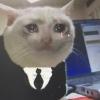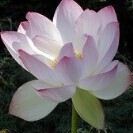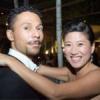Leaderboard
Popular Content
Showing content with the highest reputation on 01/27/2025 in all areas
-
I am afraid that you are not happy to know. I guess that the defaced part is 米英撃滅之剣 (A sword for the destruction of the US and Britain).7 points
-
4 points
-
4 points
-
Adam, generally speaking soft metal pieces look far better with their intended subdued and specially applied patina which is definitely not bright and shiny. I would stop now if I were you. I would be researching correct ways to calm it down rather than shine it up.3 points
-
These Efu Tachi were made for significant persons in court for the coronation ceremonies of Emperor Taisho, and Emperor Showa. A variety of Gendai smiths made the special Tachi, including Gassan Sadakatsu, Miyamoto Yoshichika, Naohiro, and Takahashi Nobuhide. The example listed above was likely made for the Taisho coronation. Given these were made for such an auspicious and important occasion, the best artisans of the time would've made the Tachi & Koshirae with the utmost respect and diligence.3 points
-
大龍斎光興作 – Tairyusai Mitsuoki saku 黄銅地角形鐔 – Brass, square shape tsuba 表富岳図 – Front: Mt. Fuji 裏三保の松原 – Back: Miho no Matsubara 文政八乙酉三朝之内彫光林五世嫡流と横に銘あり新年仕事始めの意と考へられる - There are inscriptions 文政八乙酉三朝之内彫 (Carved within the New Year’s Day of Bunsei 8th Kinoto-Tori.) and 光林五世嫡流 (The 5th main line generation of Korin) on its sides, and it seems to be the first work of the year. 名作也 – It is a masterpiece [Sides] 文政八乙酉三朝之内彫鐫 - Carved within the New Year’s Day of Bunsei 8th Kinoto-Tori (1825). 光林五世嫡流大龍斎光興 - The 5th main line generation of Korin, Tairyusai Mitsuoki3 points
-
I reckon John is right about this ....So often wondered the same thing and I just wouldn't buy one unless it had credible provenance. Its funny, whenever these appear at auction, and three did the other day in Oz, the dirty ragged one always goes for a bucket load more than ones like the above.....but ones like the above still sell I look at the seemingly never ending supply of these on the market and wonder when a pic of a 'goodluck flag' shop in China will emerge. If you do buy it Marsel, send it to me for a couple of weeks....I'm sure I will be able to make it look 'a lot better', and that will certainly increase its value. No disrespect intended3 points
-
first one is stamped tsuba easy to see the rounded edges on one side but not on other side. This is very common on Japanese iaito tsuba, but not on chinese ones, as those are more probably laser cut. The second one is one of the worst things I have been able to see.3 points
-
Just received my package today and was quite disappointed to see the result. The wooden piece was in place when I unboxed it and there wasn’t much room for the tsuba to move around. I bought the item through JAUCE. I’m guessing either the wooden piece came loose mid shipment, and ended up back to the centre by the time it arrived, or it was the original seller that didn’t pack it right. I don’t think there’s much that I can do now but maybe I’ll post this one up for sale. Maybe someone out there doesn’t mind the scratches or has a way to fix it.2 points
-
By a modern calligrapher, I bought it simply because I loved the excellent penmanship and have always admired the phrase Shichishō Hōkoku! (七生報國; "Would that I had seven lives to give for my country!"). These were the famous last words of samurai Kusunoki Masasue in 1336 and were later used by Yukio Mishima on his hachimaki and by Otoya Yamaguchi who assassinated anti-American socialist Inejirō Asanuma in 1960.2 points
-
Update! Some fine people over at the translation section deciphered the characters I took that info and threw it into ChatGPT. this is what it spit out! What do you think? Certainly! Here’s a summary of the information related to the tsuba: Inscriptions: 1. “文政八乙酉三朝之内彫”: • Carved in the 8th year of Bunsei (1825), Year of the Wood Rooster, within three mornings. This likely refers to the date and efficiency with which the tsuba was crafted. 2. “光林五世嫡流”: • Indicates the craftsman is from the fifth generation of the direct lineage of Korin, possibly referring to Ogata Korin, a famous artist associated with the Rinpa school. 3. “大龍斎光興作”: • Made by Dairyuusai Mitsuoki, a craftsman known for his work in traditional sword fittings (tosogu), possibly of the Tosa school lineage. 4. “裏三保の松原”: • Likely refers to a design or motif depicting Miho no Matsubara, a scenic location in Japan, from a unique perspective (the “rear” or “reverse” view). Likely Artistic Influences: • The Tosa school or Rinpa school traditions are strongly suggested due to the references to Korin and Mitsuoki. • Korin (Ogata Korin) is associated with the Rinpa school, known for its elegant and nature-inspired motifs, which might influence the design. • The Bunsei era (1825) places the tsuba in the late Edo period, a time when various Edo-period schools of tsuba-making flourished. Conclusion: The tsuba likely comes from a craftsman influenced by the Rinpa or Tosa schools, blending traditional motifs and elegant craftsmanship with nature-inspired designs. The inscriptions suggest it was created by Dairyuusai Mitsuoki from a prestigious lineage, possibly signifying the first work of the New Year, and the theme could be related to famous Japanese landscapes.2 points
-
thank you. I agree, I was suspicious that everything looked so new. I planned to buy it. But I didn't because you were right. Thanks for your help2 points
-
John, I saw this one when it was listed for sale. It's a very nice example and deserves a real knot IMHO. The brown leather knots with the slider are correct for this variant. See the link below - "Middle Type" http://ohmura-study.net/957.html Conway2 points
-
John, Here is the one I currently have. I don't keep any records of serial numbers, but I would say what makes them difficult to research online is that many people don't know these are a distinct model so some examples get labeled online as just NCO, cavalry, or Type 32s. I also think you should ask Brian to repost this thread in the military section for better visibility. Conway2 points
-
Hello Paul, Here are two examples from John Plimpton's collection. John was as knowledgable a guy when it comes to sword tassels and knots as anyone I have encountered. The example on the left is an authentic, box and wrapper, general's tassel. On the right is the best of the four fake general's tassels that John acquired. What tends to stand out most on fakes is how garish the zig-zag stitch is, and how every aspect is a little more course and clunky. Real general's tassels are thin and elegant in the strap, not thick. The fine weave is crisp. While the straps may have bends from folding, they do not have an uneven waviness that is characteristic of lower skill in the manufacturing process. Look at the slides on these two examples. Again, the fake is course and clunky. The authentic example is tight and precise, from the thread itself to the skill shown in weaving. Reading about Navajo textiles, and how to evaluate different materials, periods and methods of construction, will help you understand how much the fine details can show you. Compare the "berries" and again you will see a coarseness and looseness in the later copy that is not present in the original. As John observed years ago, the fakes are getting better. As we try to inform those interested in this esoteric subject, we inform those trying to make a dishonest buck off of us. The slide in the example posted by Paul appears amateurish to my eye. There is a waviness in the strap that is also a little sloppy. The overall look of the tassel is thick and stiff compared to authentic examples. I don't believe the tassel is genuine. I will see if I can post a few more for comparison's sake. And let me add what happy surprise it is to find a sophisticated young lady joining the thread. You see a similar shift in demographics happening in Japan, and it is wonderful. Respectfully, Ray2 points
-
Just for laughs (and to gauge the burgeoning power of Artificial Intelligence language models) I asked ChatGPT to liken several Japanese swordsmiths to famous European painters. Given my Sōshū prejudices, it is limited but IMHO extremely interesting. The list is by no means comprehensive and is in no way intended to be the final word or anything more than it is, an exercise in curiosity. It’s interesting both from the perspective of machine learning as well as program’s cultivation of facts and opinions. The logic ChatGPT gave for each comparison was particularly insightful and well-reasoned, really, though it was all a bit too lengthy to include here. In some ways, I think these comparisons can be especially useful for newbies trying to understand the importance of certain smiths, offering some relatable comparisons. I encourage others to see where this goes just for fun. In the meantime, here is what the bot came up with: Shintōgo Kunimitsu would be likened to Giotto di Bondone Sōshū Yukimitsu would be likened to Claude Monet Saeki Norishige would be likened to Rembrandt van Rijn Gorō Nyūdō Masamune would be likened to Leonardo Da Vinci Hikoshiro Sadamune would be likened to Raphael Chikuzen Samonji would be likened to El Greco Sōshū Hiromitsu would be likened to Titian Sōshū Akihiro would be likened to Peter Paul Rubens Go Yoshihiro would be likened to Michelangleo Awataguchi Yoshimitsu would be likened to Johan van Eyk Bizen Masatsune would be likened to Albrecht Dürer Shizu Saburo Kaneuji would be likened to Michelangelo Buonarroti Sengo Muramasa would be likened to Michelangelo Mersi da Caravaggio Horikawa Kunihiro would be likened to Peter Paul Rubens1 point
-
Thanks Brian, just renewed through PayPal and should be setup for automatic renewals from now on. I am very happy to help support, I do not post all that much as I have been studying away since coming into a larger collection all at once. I have just started to purchase a few items on my own, fittings so far. This site is amazing with the collective knowledge here. Thank you for all you do to keep this going. Jason1 point
-
1 point
-
1 point
-
1 point
-
1 point
-
Hey guys, thanks for responding! I've attached a pic of the blade. It's really in quite good shape, just some light scratches and a bit of pitting. Any idea when it was made? Conway, the tassel they offer on ebay for a Type 32 looks similar, but a bit shorter, to the 'Middle Type' in the link you posted. All of the other Type 95 tassels they offer have the buckled strap used on the cut-out tsuba. Which one do you all think would be more authentic? Thanks again all! John1 point
-
Ouch, that is really careless. I hope you at least admonished the seller for his packaging.1 point
-
That's what I assumed perhaps, but the dealer didnt mention anything about any kizu when I inquired and it's a reputable dealer. Im hoping whatever the reason will be fairly evident when it arrives.1 point
-
Thanks a lot, I was thinking about Higo because of large mimi with nunome, which I saw on several higo on the web, but if some people think it can be a different school, thanks a lot for your help.1 point
-
1 point
-
1 point
-
This is something I was wondering about but didn't have the confidence in my knowledge to raise in the thread... Every Higo school spider tsuba I have ever seen has had an iron base and usually gold adornment. For example: https://varshavskyco...collection/tsu-0206/ I've seen several of these of varying quality, but never one with a different base or a wood grain effect.1 point
-
Another possibility is that the dealer put it in for polish and they discovered a hitherto unseen kizu. It would then make sense for the polisher to call the dealer, telling him what he found and the dealer saying "ok, stop now and I'll pay you for what you've done" - then to offload it to the foreign market.1 point
-
1 point
-
1 point
-
Hello Sam, I have one by E &F Horster with the two fullers. It also has a "double" Suya logo on the guard. I am always looking for examples of parade swords with the marked German blades. You should try to go back for it Conway1 point
-
Has anyone ever encountered one of these “E & F. Hörster Type 19 Army Field Grade Kyu-gunto”? I think I found one locally, and considered buying it, but it looked so unfamiliar with that straight blade and double bohi. It appeared chrome plated. Been regretting not picking it up. I might try to find it again, if it’s still available. Cheers, Sam Page 32 from: Swords of imperial Japan 1868-1945 Cyclopedia Edition by Jim Dawson1 point
-
Very curious about what’s written on the mimi, my try: 光林 五世 嫡流 大龍斎 光興 - Kōrin go-sei chakuryū Tairyūsai Mitsuoki - Kōrin the 5th main line [generation] of Tairyūsai Mitsuoki (Ōtsuki school) 文政八乙酉三朝 … - Bunsei hachi kinoto tori (1825) …1 point
-
1 point
-
Looks like the Yamamoto Gunto shop. See page 46 of the attached document. This stamp is also found in a few posts in you search it. Conway1 point
-
1 point
-
Hi, Piers and John, this thread brings up some really interesting subjects! Let me reply first to Piers' post: I was not there, and I would not deny that they used drills to make small holes. Spindle drills are an old invention, and it could be done, but it certainly was a time-consuming work. The manufacture of hardened drill-bits might also have been a big challenge, but these were even used on much harder precious stones, so why not on iron? (An image of simple drill-bits for a spindle-drill in the attachment) It might be of interest that (cutting) spiral drills were invented by Giovanni Martignoni in 1863. I had a look at a MENPO right now which has a number of small holes in the less than 1 mm thickness iron sheet metal, but the method of making these is not at all evident. Generally, punching holes cold in thin sheet iron is easy, precise, and fast. Drilling might still be more precise, allow for smaller holes, and the flattening of the metal, possible correcting of a distortion, and finishing the holes is not necessary. As I am not familiar with armour, I am unable to proclaim a "last word" on that. John, work-hardening is done on cold metal with a lightweight hammer and very many fast blows on the chosen part of the surface (as in peening a scythe). Cutting/chiselling a signature would not cause work-hardening, and the same applies to punching a MEKUGI-ANA. This is always done on a red-hot NAKAGO, so absolutely no danger of cracking in the quench. We often see NAKAGO of older blades with 2 or more MEKUGI-ANA. Usually, one of them was initially punched by the smith. Later MEKUGI-ANA could not be punched and had to be drilled. There are modern steel alloys with high manganese content (as an example: for rails) that are likely to work-harden so easily that drill holes cannot be pre-punched. The drill-bit would not "bite"! It remains to be researched when drilling iron/steel was first introduced in Japan. I believe that there is quite a difference in work between thin sheet material and 6, 7, or even 8 mm of a steel NAKAGO.1 point
-
Thanks Matt! That number lines up nicely with the others we have: 1944, Aug Kunihide (RJT) – Kyoto 90 on mune Trotter Survey 1944, Aug Kunihide (RJT) – Kyoto 98 on mune Trotter Survey 1944, Aug Kunihide (RJT) – Kyoto 99 on mune Trotter Survey, no pics 1944, Dec Kunihide (RJT) – Kyoto 135 on mune Mdiddy, NMB, RS1 point
-
Hi, I bought a Nihonto last year which had a split saya and broken tsuka. The pictures below are how the state was when I bought the sword. I first built a new tsuka from scratch. By the way, I am no woodworker, and this was my first real woodworking project. Later I build a new saya due to the cracked saya, which is not airtight anymore. The wood is honoki wood I bought from Namikawa. Picture below shows the old cracked saya Below is a photo with almost finished koshirae The last step I have to make is to add a Kurikata. I know you normally carve the place for the kurigata out before painting, but the material was too thin to make it that way. The original saya is also very slim, and I made it like the original. I choose to paint it black and still consider making an ishime finish before adding the kurigata. What do you think? The paint is not urushi because it is not really available in my country, and curing it is not possible in my environment (air humidity and temperature). I also built the katana kake in the picture. I hope you like it. Finally, the reason I built a DIY korishae is because the old one is broken, and it would not make sense to get a new one made before it was polished. Because the blade is a mumei and probably not worth the money it would cost to get it polished and get a new koshirae, I made the decision to leave the blade in its unpolished state and just make a new koshirae. The project was really interesting, and I learnt a lot from it. I think it looks good for my level of skill in woodcraft. Please don't hate; just constructive criticism.1 point
-
1 point
-
Dear Gpa Stephen, I got Steve his knitting needles and made it from sand to pebble, didn't I? All is well! 😉❤️1 point
-
1 point
-
1 point
-
1 point
-
After much contemplation and trial and error I have finished off the axis pin. I first tried the rolling method using a piece of sheet brass taken off a brass 12g shotgun shell rolled around a 3mm drill bit, which worked but the brass was too thin, about 0.2mm. Instead I rummaged around my bits boxes and found a 4mm brass tube with 0,5mm wall thickness - perfect! I cut a 3cm section, slit it down one side, annealed with a short blast of the blowtorch it to make it pliable and then gently hammered it on the 3mm drill bit to make the sides of the slit meet. The diameter was still slightly too big for the hole in the pan so I used the hole itself as a die to size the brass tube down to the right diameter by tapping it through. On the lathe I cut down a piece of bar stock to form the axis pin head, inserted the brass tube and soldered it in. All that remained was shaping the head with hand files and fine grit paper, drilling the cross hole for the wire and trimming the pin to length. 😊 Ammonia patination next and then it’s making a new stock cap 💪1 point
-
1 point
-
1 point
This leaderboard is set to Johannesburg/GMT+02:00

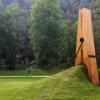
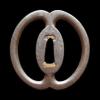
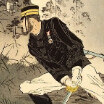





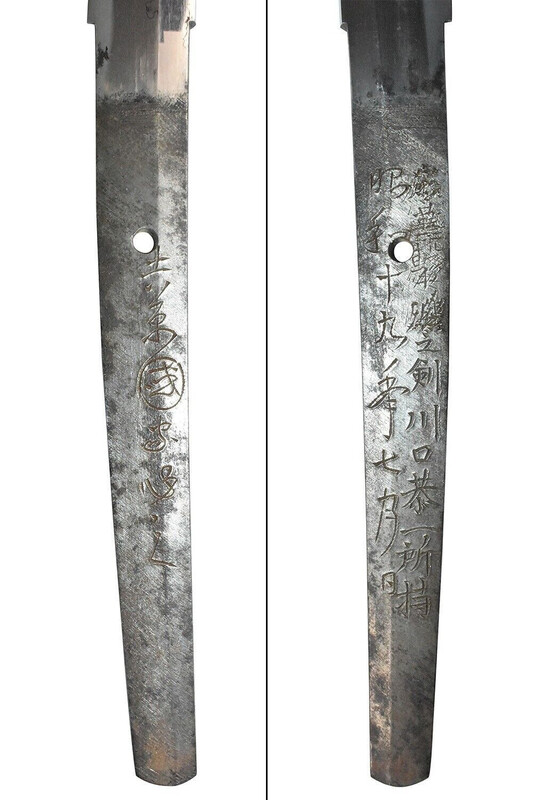


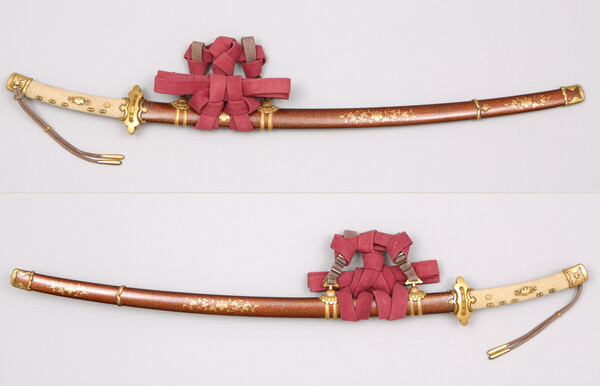

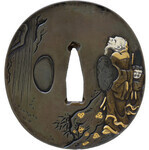
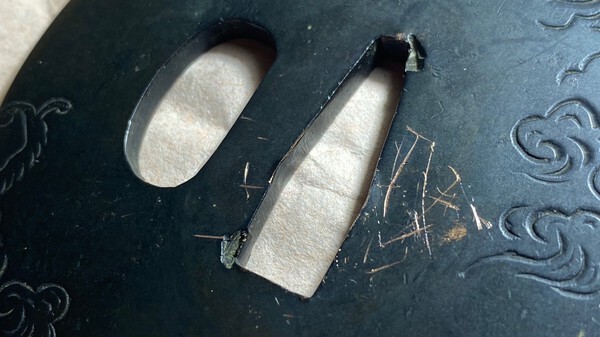





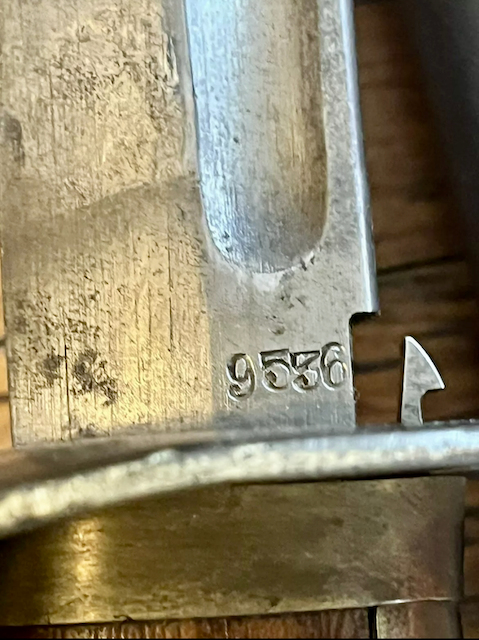


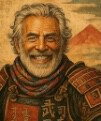















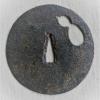
.thumb.png.4c5df79fec171b2dc4a23af38e280a4d.png)





